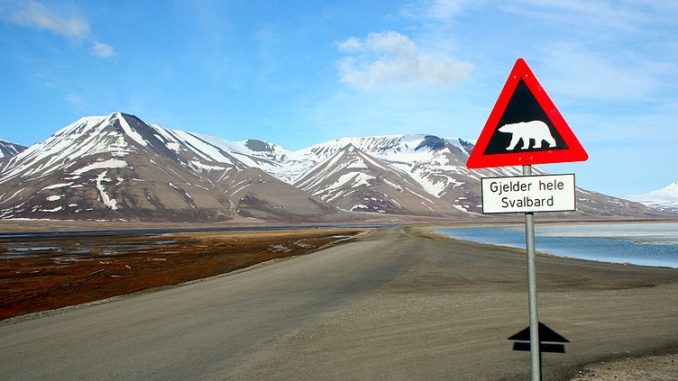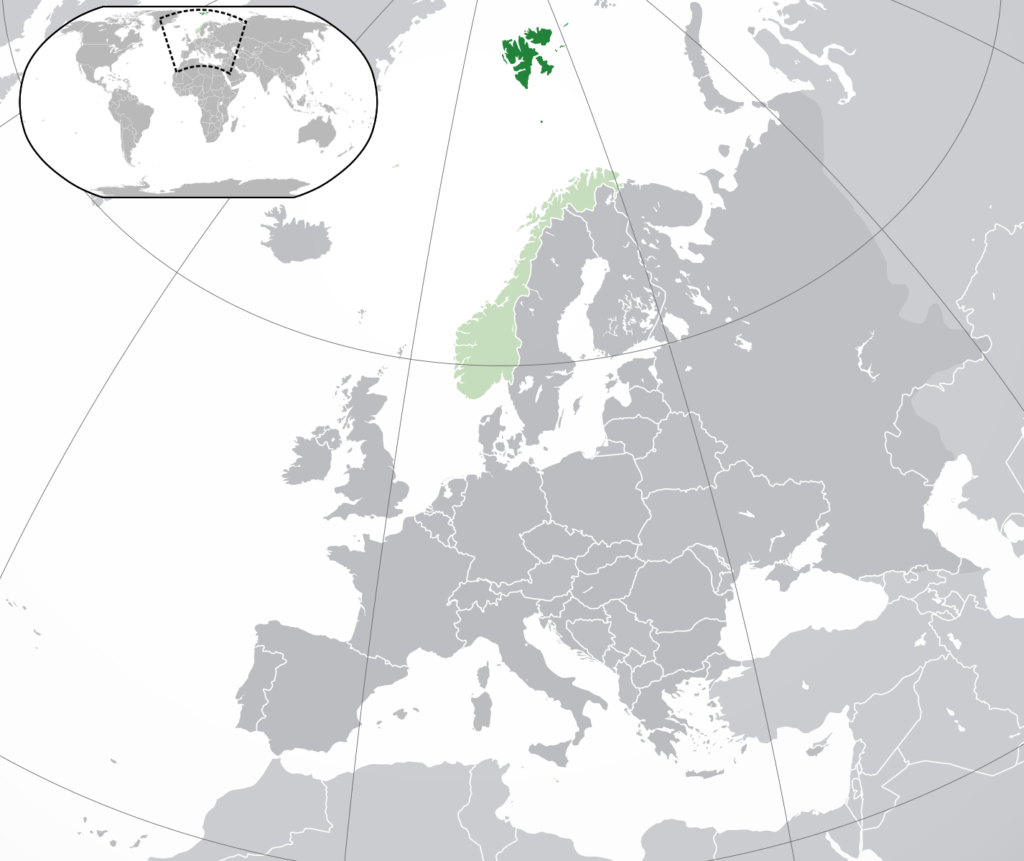
If you thought this Night Owl was going to be about the English hardcore punk band from Bristol, prepare to be disappointed. On the other hand, if you were hoping this Owl was about the remote archipelago above the Arctic Circle, you’re in luck!
Svalbard is in the Arctic Ocean, north of Europe and east of Greenland, approximately halfway to the North Pole from Norway. The Dutch explorer Willem Barentsz was the first to find the islands, in 1596, while on an expedition to discover the Northern Sea Route (also called the Northeast Passage) from the Atlantic to the Pacific by sailing east above Russia. However, he thought he was looking at just one island, not a large group of islands. Barentsz named the island Spitsbergen. Thereafter the entire archipelago, when realized, was known as Spitsbergen until 1925.

In the early seventeenth century, Europeans came to Spitsbergen to hunt walrus, whales, and later in the century, arctic fox and polar bears. Settlements were established by commercial interests, although most were not occupied year-round until the late nineteenth century when coal was discovered and mining operations were begun by companies from several nations. Around the same time, interest in Arctic exploration spawned research stations and a tourist industry.
Naturally, where there are humans there will be disputes and conflicts. Spitsbergen was no different, with disputes between nations over whaling and mineral rights, and sovereignty over the territory. There were also conflicts between miners and mining companies. Clearly, a government was needed to sort out these disagreements and provide laws for a lawless land. After the First World War, the Spitsbergen Treaty (later called the Svalbard Treaty) was hashed out at Versailles and signed by 14 nations in February, 1920. It took effect in August, 1925. The treaty gives Norway full sovereignty over the archipelago, and since it was now theirs the Norwegians immediately renamed it Svalbard, which translates to something like ‘frozen chin-weasel’ (or, if you’re a persnickety literalist; “cold beard”). Nearly three dozen additional nations signed on to the treaty later, bringing the total to 46 signatories.
Thanks to the aforementioned treaty, Norwegian law applies in the territory, with several stipulations:
- Any citizen of any nation may visit or immigrate to Svalbard without a visa for the purpose of tourism, or to hunt and fish, or to work for a commercial interest. (Although if you stay, you are subject to Norwegian law and one of their laws is, you must have proof of income)
- Any company from any nation which signed the treaty may come to Svalbard to engage in commercial activities
- Taxes may be no more than what is needed to support the government and infrastructure of Svalbard – no taxes collected in Svalbard may find their way into Norwegian coffers: the budgets are kept separate
- The environment must be preserved
- Svalbard must remain a demilitarized zone.
The infrastructure is somewhat limited. There are no roads between the towns, and off-road vehicles (with the exception of snowmobiles) are prohibited. To get from one town to another requires a boat, aircraft, or snowmobile. Svalbard Airport is the primary point of entry from the continent, but small cruise ships also bring tourists (although the size of passenger ships is limited by law to prevent overwhelming the local population).
Tourism and research are major parts of the local economy. The Norwegian government established the University Centre in Svalbard (UNIS) to support research and built the Svalbard Global Seed Vault to safeguard the world’s seeds in the event of calamity. (For the first time, the vault recently pulled seeds out of storage and sent them to Syria to help agriculture there recover from civil war).
Although over half the land mass of Svalbard is covered by glaciers, I remember seeing pictures online of an idyllic, snow- and ice-free fishing village on a small bay. Unfortunately, I can’t find them at the moment but I can tell you that they beckoned me to come visit, and I am tempted. However, due to the current pandemic, tourism is restricted.
Meanwhile, should you be interested in visiting Svalbard virtually, there are a slew of YouTube videos you can check out to get a feel for the place without leaving your living room. Bon voyage!
Question of the Night: The ocean above the Arctic Circle is called the Arctic Ocean. What is the ocean around Antarctica called? No help from the internet, please, but you may phone one friend.
